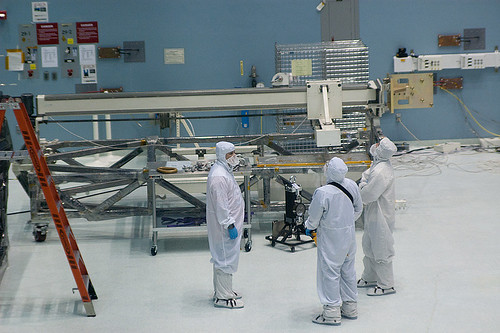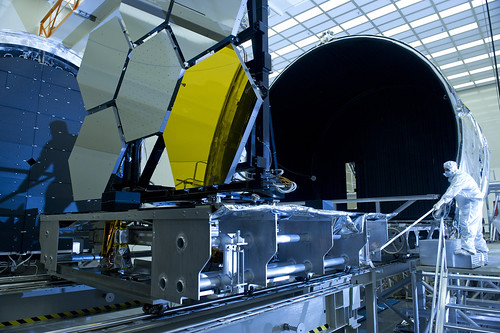Awesomeness Round-up – 11/1/10
- By Sara Mitchell
- November 1, 2010
- Comments Off on Awesomeness Round-up – 11/1/10
Last week was apparently a great week for astronomy – the shared file where Maggie and I gather all of the images, videos, and stories that we see all week was absolutely overflowing with possible content for today’s round-up! So we’ve distilled it to the best of the best, and I hope you’ll enjoy the variety that we’re featuring. This may be a monster round-up, but it is the day after Halloween. (Sorry, couldn’t help myself.)
First up, this movie is a zoom into the giant globular star cluster Omega Centauri, from a ground-based image to one from the Hubble Space Telescope. The ending is especially cool – the simulated motion definitely looks like a swarm of bees, I can see why they’re referring to it as a “beehive” in the news release! Scientists are interested in studying this motion, and also whether there’s a black hole lurking among the stars.

Credit: NASA/ESA/G. Bacon (STScI)
If you’re interested in the cosmological beliefs of ancient cultures around the world, you’ll love this Visual Chronology of Cosmologies! That’s part one, and the author just put up part two. So far, he’s posted 81 amazing images from historical texts and other sources.
Last week, twelve lucky folks came to Goddard for a VIP tour of the center, including many of our integration and testing facilities. We enjoyed following their tweets and also looking through some of the photos they posted as they ventured around Goddard. You can always tell when there’s a tweet-up, because everyone’s got a mobile device in their hands. Actually, that describes many of the employees here…
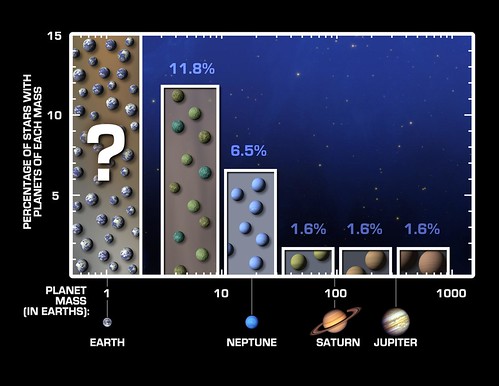
Credit: NASA/JPL-Caltech/UC Berkeley
A new planetary census has been released, using the ground-based W.M. Keck Observatory in Hawaii to look at extrasolar planets of various masses around neighboring stars in the Milky Way galaxy. What did they find? More small planets than large ones, and Earth-sized ones everywhere! Astronomers are looking for true Earth-like planets with other telescopes, such as NASA’s Kepler, and hope for results in the coming years. Meanwhile, Kepler is observing stellar oscillations, or “starquakes,” to learn more about the size, age and evolution of distant stars.
In our ongoing coverage of the assembly and testing of the James Webb Space Telescope, we were excited to see that the Webb’s primary mirror segment has passed a milestone in its tests in the X-ray & Cryogenic Facility at Marshall Space Flight Center in Huntsville. The testing subjects each mirror to extreme temperatures, seeing how the mirror’s shape is affected by a range of operational temperatures. Each mirror segment is tested, re-polished, coated with gold, measured at Ball Aerospace, and finally tested again. Whew! They expect to be done with the process in 2012.
Over on Bad Astronomy, Phil Plait posted some phenomenal images of the Sun from astrophotographer Alan Friedman. As Phil points out, it’s exciting to see such breathtaking pictures coming from a small, Earth-based telescope when we’ve got all of our fancy telescopes pointed at the Sun, too. The post generated some interesting comments as well.
Last week, Phil also featured an all-sky picture from Stéphane Guisard that lets you zoom and pan to your heart’s content. Shot from the Atacama desert in Chile, where it gets really dark, the Milky Way is boldly visible as it circles the horizon. Absolutely amazing.
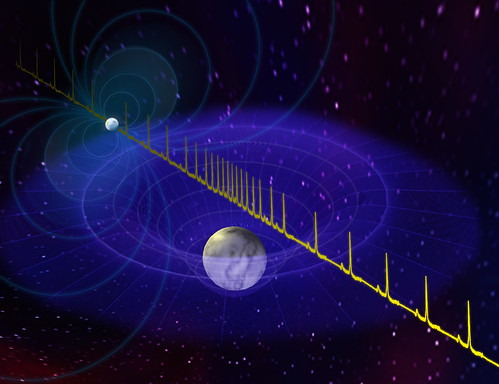
CREDIT: Bill Saxton, NRAO/AUI/NSF
Neutron stars are the leftovers from massive stars that have gone supernovae, with insane density – just a tiny pinch of the star’s material weighs hundreds of millions of tons. Astronomers at National Science Foundation’s Green Bank Telescope have discovered the largest one yet, twice as massive as the Sun. It’s got an orbital companion, a white dwarf, and the neutron star itself is a pulsar that emits easy-to-track radio waves. These radio waves also made it easy for scientists to precisely measure the masses of both stars. These exotic sources are not only fun to observe… they also give scientists new insight into how the Universe works.
Geeked on Goddard talked to X-ray astronomer Phil Evans about a new X-ray nova found in the constellation Centaurus, inside the Milky Way galaxy with us! The source, MAXI J1409-619, was found through complementary observations made by the Swift observatory and the MAXI instrument on the International Space Station. MAXI spotted the nova, and Swift swiveled around to observe it soon thereafter. Swift usually makes the discoveries and tells other satellites where to look, but this time, it did the follow-up!
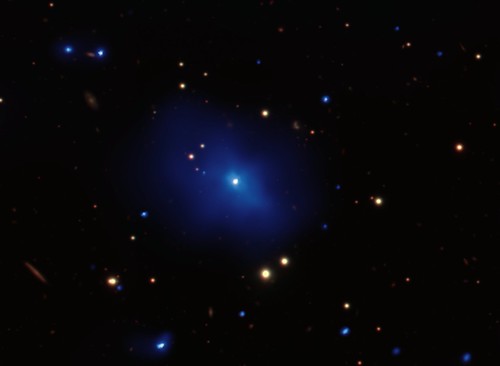
Credits: NASA/CXC/SAO/A.Siemiginowska et al. Optical: AURA/Gemini Obs.
Chandra released this intriguing composite image (the blue is from Chandra, the yellow is from the Gemini telescope) – a galaxy cluster with a central quasar within a core of relatively cool gas. The gas is cooled by intense X-ray emission. This cluster is the most distant known galaxy cluster with a cooling core, and the most distant ever observed with a quasar. Scientists are intrigued to study this object further!
Finally, two stories about the intersection of astronomy and pop culture! First, we were intrigued by the Christopher Kane Resort 2011 Collection, which showed in London earlier this year. Kane drew the inspiration for his fabrics from the heavens – nebulae and other cosmic delights, imaged by the Hubble Space Telescope. We once joked in a podcast about astronomy-themed evening gowns, but this is the real deal. I’d love to wear some of Kane’s gorgeous astronomical apparel, perhaps to an evening at the symphony?
We were also excited to see astronomy Neil deGrasse Tyson tweet about his appearance on The Big Bang Theory, accompanied by several hilarious photos from the set. As we’ll discuss in an upcoming podcast, the show goes out of its way to get its science right and impress the science-interested members of the audience. Getting real scientists, like Tyson and Nobel Laureate George Smoot, adds realism and definitely has us tuning in.


